Exercise for Seniors: As we get older, staying active becomes more and more important for our health and well-being. Regular exercise can improve physical health, boost mental well-being, and enhance overall quality of life for seniors. This guide covers some of the best exercises for seniors, focusing on activities that are safe, effective, and enjoyable. As we age, staying physically active becomes increasingly important for maintaining health, mobility, and overall well-being.
Exercise for seniors is essential not only for physical fitness but also for mental health, social engagement, and maintaining independence. This guide will explore the best exercises for seniors, focusing on different aspects of fitness including strength, flexibility, balance, and cardiovascular health. Whether you are new to exercise or looking to update your routine, these activities can be tailored to your fitness level and needs.
Benefits of Exercise for Seniors:
Before we jump into specific exercises, let’s talk about why staying active is so important for older adults:
1. Keeps Your Heart Strong: Regular exercise keeps your heart healthy and your blood flowing smoothly, lowering the risk of heart disease.
2. Helps You Stay Strong and Flexible: Moving your body helps you keep your muscles strong, stay flexible, and maintain your balance. This means fewer trips and falls, and more independence in your daily life.
3. Boosts Your Mood: Exercise isn’t just good for your body—it’s great for your mind too! It can help lift your spirits, reduce feelings of stress and anxiety, and keep your brain sharp and focused.
4. Can Add Years to Your Life: Studies have shown that staying active can actually help you live longer, healthier lives. Who wouldn’t want that?
5. Keeps You Independent: By staying active and mobile, you’re able to keep doing all the things you love without relying on others for help. It’s all about staying independent and feeling confident in your abilities.
Types of Exercises for Seniors:
Here are some of the best exercises for seniors, organized by type:
1. Aerobic Exercises:

Aerobic exercises, which are also called cardiovascular exercises, play a vital role in boosting heart health and stamina.
A. Walking:
Walking is a fantastic low-impact activity that you can do just about anywhere. Try to aim for at least 30 minutes a day, five days a week. For instance, taking a brisk stroll through the park can burn around 150-200 calories per hour, which is like walking 3-4 kilometers.
B. Swimming:
Swimming is gentle on your joints and gives your entire body a good workout. It’s especially great for seniors dealing with arthritis. For example, an hour spent swimming can help you burn approximately 400-500 calories.
C. Cycling:
Whether you’re pedaling away on a stationary bike or cruising on a regular bicycle, cycling is excellent for strengthening your legs and improving your cardiovascular fitness. Just 30 minutes of cycling can burn about 200-300 calories.
2. Strength Training:
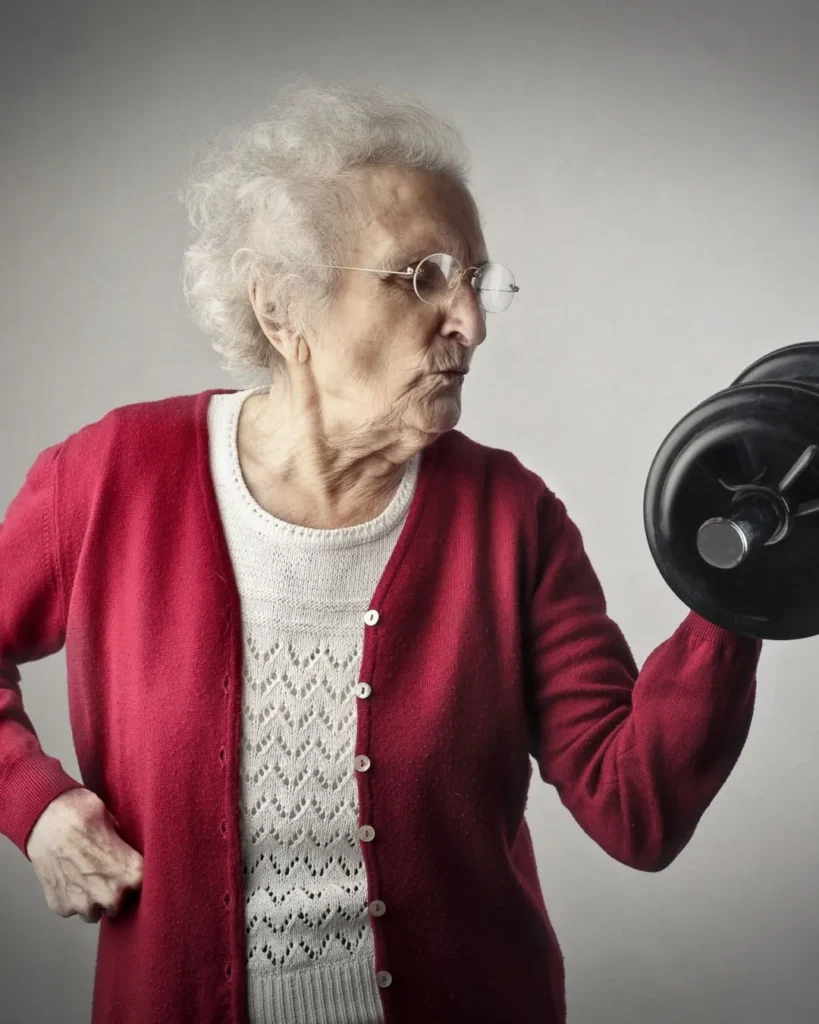
Strength training exercises are essential for maintaining overall health and mobility as we age. Here are some simple yet effective ways to incorporate strength training into your routine:
A. Resistance Band Exercises:
These bands are incredibly versatile and user-friendly. You can perform a wide range of exercises, from bicep curls to leg presses, using resistance bands. They provide gentle yet effective resistance, making them ideal for seniors.
B. Dumbbell Exercises:
Light dumbbells are perfect for strength training. You can use them for exercises like shoulder presses and tricep extensions. Aim for two sessions per week, with 8-12 repetitions of each exercise to build muscle mass and bone density.
C. Bodyweight Exercises:
You don’t always need fancy equipment to strength train. Bodyweight exercises like squats, lunges, and push-ups are incredibly effective and can be modified to suit different fitness levels. For example, if traditional squats are too challenging, you can start with chair squats and gradually progress.
Incorporating these strength training exercises into your routine will help you stay strong, mobile, and independent as you age. Remember to start slowly, listen to your body, and consult with a fitness professional if you’re unsure about how to perform any exercises safely.
3. Flexibility Exercises:
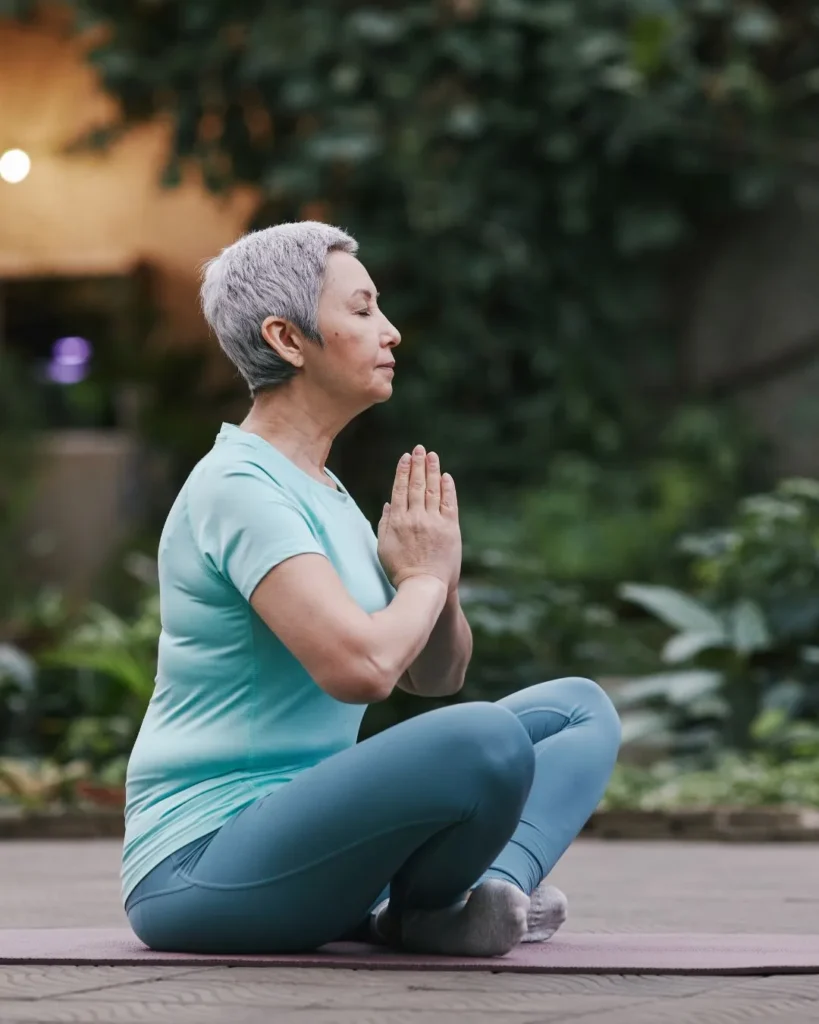
Flexibility exercises are essential for keeping your joints moving smoothly and preventing stiffness. Here are a few effective ways to improve your flexibility:
A. Stretching:
Regular stretching helps keep your muscles flexible and reduces tension. Focus on stretching major muscle groups and hold each stretch for 15-30 seconds. For example, stretch your hamstrings, shoulders, and back daily to maintain flexibility.
B. Yoga:
Yoga is excellent for combining flexibility, strength, and balance. Many yoga classes are specifically designed for seniors and offer gentle poses and modifications. For instance, a 60-minute gentle yoga session can burn around 200 calories while improving your flexibility and relaxation.
C. Tai Chi:
This ancient Chinese practice involves slow, deliberate movements and deep breathing, making it perfect for enhancing balance, flexibility, and mindfulness. It’s gentle on the body and can be done almost anywhere.
4. Balance Exercises:
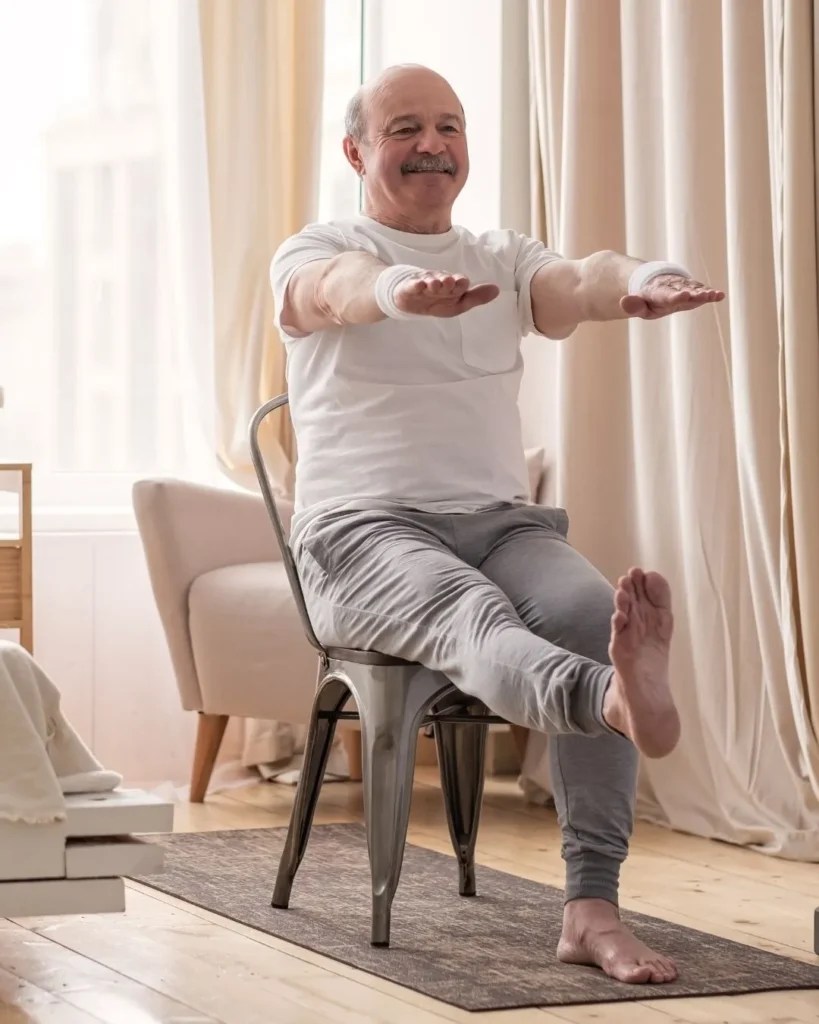
Balance exercises are crucial for seniors to prevent falls, which are a common issue as we age. Here are some simple and effective exercises to improve balance:
A. Heel-to-Toe Walk:
Walk in a straight line, placing the heel of one foot directly in front of the toe of the other foot.
B. Standing on One Foot:
Try standing on one foot for 10-15 seconds, then switch to the other foot. If needed, hold onto a chair for support. This exercise strengthens your legs and enhances stability.
C. Chair Stand:
Sit in a chair with your arms crossed over your chest. Slowly stand up and sit back down without using your hands. Repeat this 10-15 times to strengthen your leg muscles and improve your balance.
5. Low-Impact Aerobics:
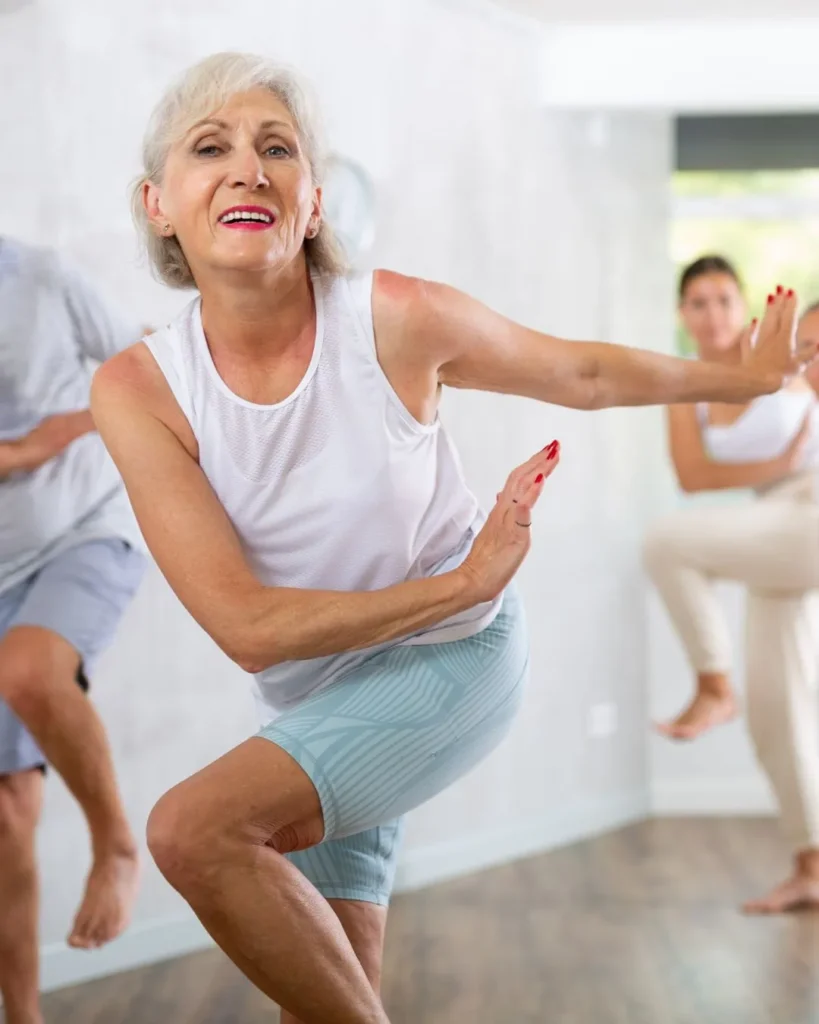
These exercises are great for boosting your heart rate without putting too much stress on your joints.
A. Water Aerobics:
Doing aerobic exercises in water is easier on your joints because the water supports your weight, while still providing resistance to help strengthen your muscles. For example, an hour of water aerobics can burn around 400 calories.
B. Dance Classes:
Dance classes, such as Zumba Gold or ballroom dancing, are enjoyable ways to keep moving. These classes are usually adapted to fit various fitness levels, making them suitable for everyone.
6. Core Exercises:
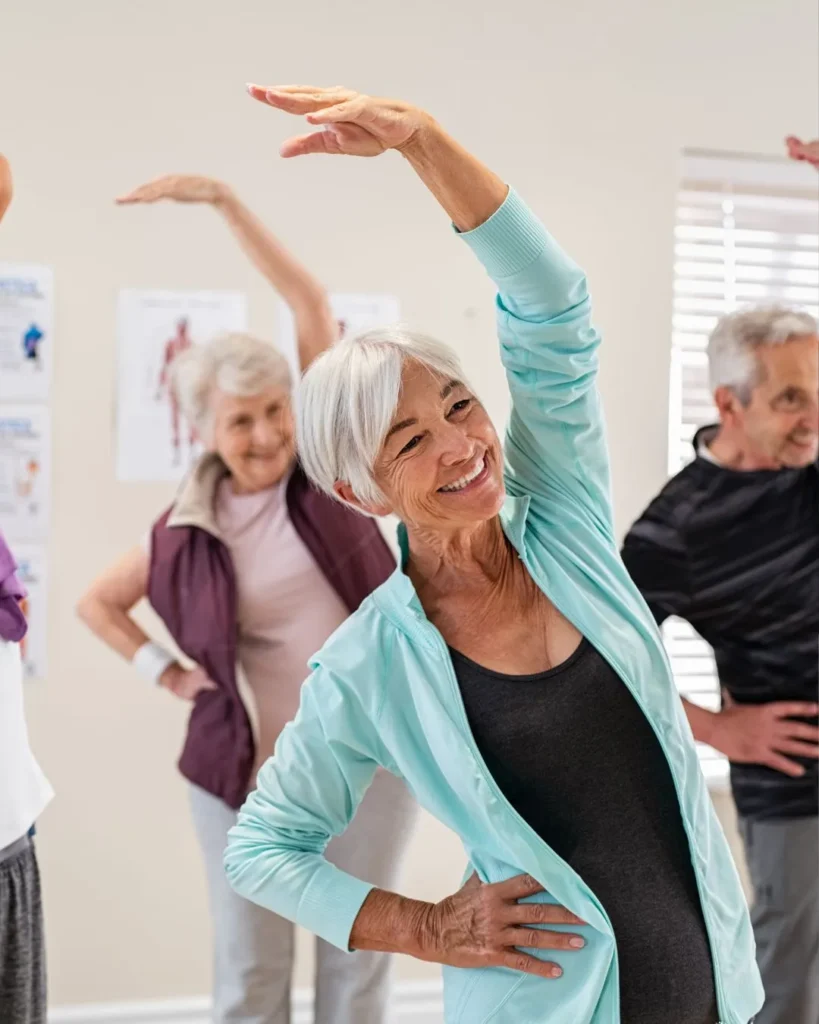
A strong core supports your spine and helps with balance and stability. Here are some simple exercises you can do to strengthen your core:
A. Seated Marching:
Sit in a chair with your feet firmly planted on the ground. Lift one knee towards your chest, lower it, then repeat with the other knee. This exercise strengthens your abdominal muscles.
B. Pelvic Tilts:
Lie down on your back with your knees bent and your feet flat on the floor. Tighten your abdominal muscles and tilt your pelvis slightly upward. Hold for a few seconds, then release. This helps strengthen your lower back and abs.
C. Bridge:
First, lie down on your back with your knees bent and your feet flat on the floor. Now, slowly lift your hips up towards the sky as high as feels comfortable for you. Hold this pose for a moment, feeling the stretch in your lower back and thighs. Then, gently lower your hips back down to the starting position. Repeat this movement a few times, aiming for about 10 to 15 repetitions. This exercise is great for working your butt, lower back, and core muscles, helping to strengthen them and improve flexibility.
Creating a Balanced Exercise Routine:
To reap the full benefits of exercise, it’s important to create a balanced routine that incorporates different types of exercises. Here’s a sample weekly plan:
- Monday: 30-minute brisk walk (Aerobic) + 15-minute stretching (Flexibility)
- Tuesday: 30-minute strength training (Strength) + 15-minute yoga session (Flexibility)
- Wednesday: 30-minute water aerobics (Low-Impact Aerobics) + 10-minute balance exercises (Balance)
- Thursday: 30-minute cycling (Aerobic) + 15-minute core exercises (Core)
- Friday: 30-minute dance class (Low-Impact Aerobics) + 15-minute stretching (Flexibility)
- Saturday: 30-minute resistance band workout (Strength) + 10-minute balance exercises (Balance)
- Sunday: Rest or light activity like a leisurely walk or gentle stretching
Safety Tips for Exercising for Seniors:
1. Check with Your Doctor: Before diving into a new exercise routine, it’s smart to talk to your healthcare provider. They can help ensure the activities you’re planning are safe and suitable for you.
2. Warm Up and Cool Down: Always start with a warm-up to get your body ready for exercise and finish with a cool-down to aid in recovery.
3. Stay Hydrated: Keep yourself well-hydrated by drinking plenty of water before, during, and after your workouts.
4. Listen to Your Body: If you experience pain or discomfort, stop the activity and consult a medical professional if necessary.
5. Use Proper Equipment: Make sure you have the right gear, such as supportive shoes and appropriate resistance bands or weights, to prevent injuries.
6. Start Slow: If you’re new to exercise or coming back after a break, take it slow. As you progress, make sure to slowly ramp up both how hard and how long you exercise.
Staying active is essential for seniors to maintain their health, independence, and overall quality of life. Including different types of exercises such as aerobic, strength, flexibility, balance, and core workouts can help achieve full-body fitness and well-being. Always check with a healthcare professional before starting any new exercise routine, pay attention to your body’s signals, and most importantly, enjoy the process of staying active!
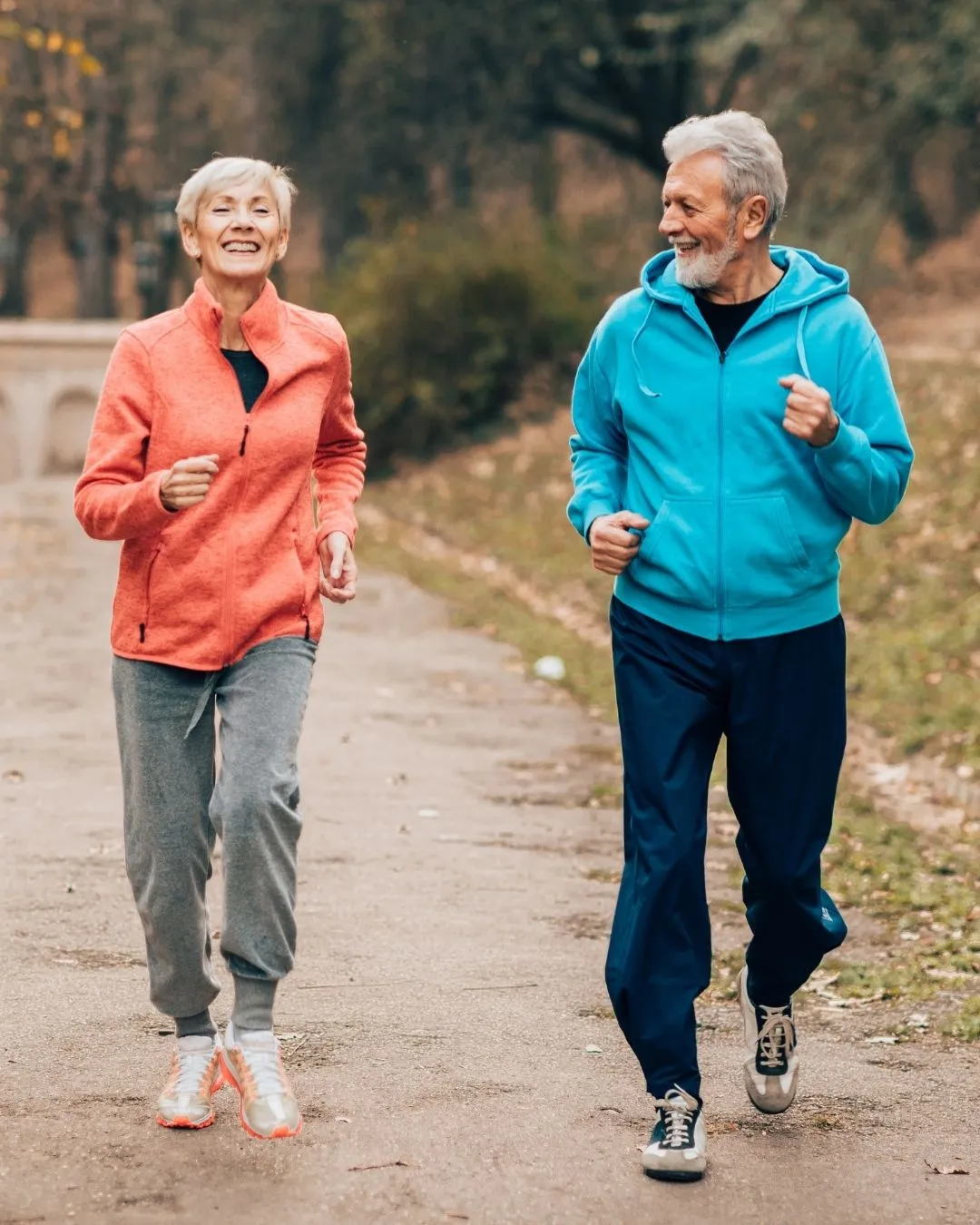
1 thought on “6 Exercise for Seniors: Strength, Balance, Core & More”